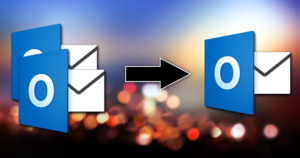Email is still a powerhouse for communication, and the right client can turn it into a seamless productivity booster. When it comes to open-source email clients, Mailspring vs Thunderbird is a big debate as there are two prominent choices. Both provide strong features, yet they serve distinct user preferences and requirements. This blog breaks down the differences, making it easier for you to choose the right option.
Overview of the Mailspring vs Thunderbird
Mailspring
Previously called Nylas Mail, Mailspring is an open-source tool that helps users handle their emails swiftly and effortlessly. After Nylas Mail was discontinued in 2017, a lightweight successor was developed to take its place. By ditching the bulky cloud sync engine in favor of a streamlined local system, Ben Gotow transformed Mailspring into a faster, more powerful email client.
Features of Mailspring Email Client
- With Mailspring, navigating emails is a breeze—swipe, tap, or use advanced keyboard commands to find what you need in an instant.
- Access and manage emails across different providers with IMAP and SMTP compatibility.
- Stay organized with a unified inbox, express yourself with customizable themes and layouts, ensure accuracy with built-in spell check, and communicate effortlessly with multi-language translations.
- This email client can uncover details about unknown contacts from social media and the web while also tracking how recipients engage with the emails, offering professionals a smart way to boost engagement and streamline contact management.
- Mailspring delivers powerful functionality without compromising speed, even on older or slower systems.
- If you live in your inbox, Mailspring Pro is your secret gesture, powerful keyboard shortcuts and lightning-fast search.
- Unless you’re an email marketer, the free plan has everything you need.
- Besides features like a combined inbox, email tracking, and personalization, Mailspring works seamlessly on Windows, macOS, and Linux.
Thunderbird
On the other hand, Mozilla introduced Thunderbird in 2003 as an open-source email client. Its flexibility, security, and wide range of add-ons made it a popular choice. Mozilla stepped back from development in 2012. However, thanks to community support, Thunderbird remained active and has recently received updates to boost performance and modernize its look.
Features of Thunderbird Email Client
- Supports multiple accounts with IMAP, POP3, and SMTP compatibility.
- Developed by the same team behind Firefox, this open-source project lets you decide where to store your emails.
- This email client offers advanced filtering and message management to keep your inbox organized effortlessly.
- It stands out with built-in OpenPGP encryption, a rare addition to email clients.
- You can access many free templates, but smart templates require payment.
- The newly introduced ThunderAI lets you iterate ChatGPT into your email client at no cost.
- Besides features like flexibility, security, and add-ons, Thunderbird also seamlessly works on Windows, macOS, and Linux.
Mailbird and Thunderbird may both be email clients, but they come from distinct backgrounds and follow unique design philosophies. Let’s compare Mailspring vs Thunderbird in the form of the table given below:
Comparison Between Mailspring and Thunderbird
| Features | Mailspring | Thunderbird |
|---|---|---|
| User Interface | Modern, minimalistic | Traditional, cluttered but customizable |
| Calendar & Tasks | No built-in support | Integrated with lightning add-ons |
| Email Tracking | Yes, built-in | No (only possible with required add-ons) |
| Search Capabilities | Advanced, NLP-based | Powerful but traditional |
| Customization | Limited themes | Highly customizable with add-ons |
| Extensions / Add-ons | Not supported | Extensive add-ons available |
| Language Support Capabilities | Support 38 languages | Support 65 languages |
| Performance | Fast and lightweight | Can be resource-intensive |
| Pricing Difference | $8 per month | Free of cost |
| Security & Encryption | Basic security | Advanced security with PGP support |
| Platform-Support | Windows, macOS, Linux | Windows, macOS, Linux |
Let’s Dive into Deep:
But which one do you think is the perfect choice? Let’s take a closer look and compare both options to find out which open-source email client is best for you. Mailspring vs Thunderbird detailed comparison is below:
1. User Interface & Design:
- Mailspring is a great choice for those who appreciate stylish and modern design. Its sleek, user-friendly interface makes navigation easy, rivalling top email clients like Outlook.
- Though Thunderbird offers great functionality, its interface appears less modern than Mailspring’s. Yet, it shines with its customizable add-ons and themes. The traditional user interface is ideal for users who prefer simplicity over flashy design.
2. Search Capabilities:
- With NLP-based technology, Mailspring search capabilities provide smarter and more intuitive results.
- The search capabilities are powerful, though Thunderbird sticks to traditional methods.
3. Customization & Add-ons:
- Mailspring offers some customization, but it’s not as flexible as Thunderbird. With minimal add-ons, users mainly rely on its default features and themes. While it runs on Electron, which may demand more resources on low-end devices, it still delivers solid performance overall.
- Thunderbird stands out for its customization options, thanks to an extensive library of extensions. When multiple add-ons are installed, it may use more system resources. However, it still runs smoothly and efficiently, even with large email loads.
4. Performance & Speed:
- Built for speed and efficiency, Mailspring runs on a modern framework with GPU acceleration and background sync for smooth performance. Yet, it requires more system resources than Thunderbird.
- Thunderbird stands out as a seasoned email client, fine-tuned for reliability and speed. Its lightweight design ensures smooth performance, even on aging devices, making it the perfect pick for users who value efficiency over unnecessary frills.
5. Email Tracking:
- With Mailspring’s integrated email tracking, you can easily keep tabs on your messages.
- Email tracking isn’t included by default in Thunderbird; you’ll need add-ons to enable it.
6. Plans & Licensing:
- The free version of Mailspring covers the basics, but to unlock professional features such as link tracking, follow-up reminders, and collaboration tools, you’ll need the $8 per month pro subscription.
- Thunderbird is completely free, offering full functionality without any limitations or premium plans. You can also use many free templates, but smart ones come at a price. Actually, it isn’t essential for everyone, so it is up to you.
7. Security & Privacy:
- Mailspring lacks built-in encryption, which might be a drawback for privacy-focused users. Additionally, requiring a Mailspring ID login raises some security concerns.
- When it comes to security and privacy, Thunderbird takes the lead. With PGP encryption, built-in defenses against phishing, and seamless automatic updates, your emails stay protected. Plus, it runs independently without needing an account from any third-party service.
8. Platform Support:
- No matter which operating system you use—Windows, macOS, or Linux—Mailspring ensures a smooth and unified experience across all devices.
- Thunderbird effortlessly adapts to Windows, macOS, and Linux, delivering a seamless experience while optimizing performance for each platform.
Still confused about whom to go with? Let’s make it even easier for you. By differentiating between their potential pros and cons, maybe then you’ll be able to choose the right option for yourself.
Things to Know Before Using Mailspring:
Pros & Cons of Mailspring Email Client
| Benefits with Mailspring | Possible Drawbacks with Mailspring |
|---|---|
| ● User Interface: With its sleek and intuitive layout, Mailspring offers a seamless user experience that prioritizes simplicity and elegance. | ● Limited Integrations: Unlike some email clients that seamlessly connect with numerous third-party apps, Mailspring offers a more streamlined experience with fewer integrations, which may not suit users who thrive on interconnected tools. |
| ● Advanced Search: Searching for emails is a breeze with Mailspring’s powerful tools, enabling users to pinpoint messages using customized queries. | ● Resource Usage: Some users have noticed that Mailspring can consume a lot of system resources, which may cause slowdowns, especially on less powerful devices. |
| ● Open Source: As an open-source project, Mailspring evolves through collective efforts, constant innovation, and a transparent development process. | ● Subscription Model: Although Mailspring offers a free version, accessing its premium features requires a Pro subscription, which might be a drawback for budget-conscious users. |
| ● Customization: Users can tailor their experience with different themes, layout choices, and customizable keyboard shortcuts. | ● Learning Curve: While the interface is intuitive, newcomers may need some time to adjust, especially if they’re accustomed to other email platforms. |
| ● Unified Inbox: The application brings together multiple email accounts from different providers, creating a single inbox for effortless management. | ● Occasional Bugs: Similar to various software applications, Mailspring could experience small hiccups that affect its email management functions. |
| ● Email Tracking: Users can track when their emails are opened and read, gaining useful insights into recipient engagement. | ● Privacy Concerns: Mailspring’s tracking tools might feel like a digital magnifying glass, raising privacy concerns for both those sending and receiving emails. |
| ● Cross-Platform: Whether you’re on Windows, macOS, or Linux, Mailspring keeps your email experience smooth and uniform across all platforms. | ● No Mobile-Friendly Apps: There is no mobile application for Mailspring available for mobile phones. |
Know Thunderbird in Detail Before Making Any Decision:
Pros & Cons of Thunderbird Email Client
| Benefits with Thunderbird | Possible Drawback with Thunderbird |
|---|---|
| ● Integrated Calendar: With the Lightning extension, managing your schedule becomes effortless, as it seamlessly integrates calendar tools into your email client. | ● Dependency on Extensions: Customization is a major advantage. However, depending on extensions for essential features can cause hiccups, particularly when updates roll out. |
| ● Robust Security: With Thunderbird, your emails stay safe thanks to advanced security tools like phishing detection, junk mail filtering, and encryption options using S/MIME and OpenPGP. | ● Less Intuitive UI: The interface feels a bit old-fashioned and lacks the smooth, modern appeal found in newer email clients. |
| ● Free & open source: Thunderbird is not only free but also an open book—its source code is available to everyone, fostering a collaborative and transparent development process. | ● Performance Issues: Thunderbird is generally reliable, but some users notice it slows down when managing hefty email archives or juggling multiple accounts. |
| ● Customization: Users can customize their email client effortlessly, thanks to the app’s extensive support for themes and extensions. | ● Limited Mobile Support: Without an official mobile app, Thunderbird leaves users without a seamless way to check their emails while on the move. |
| ● Cross-Platform: Thunderbird’s cross-platform compatibility means you can use it effortlessly on Windows, macOS, or Linux, making it a versatile choice for all users. | ● Doesn’t Support Mobile: Thunderbird is not mobile-friendly. It doesn’t provide an application for Android or iOS. |
Final Verdict:
Mailspring and Thunderbird are top choices among open-source email solutions. We compared both options in this blog to help you make the best decision. We know that the Mailspring vs Thunderbird debate is old as they are popular email clients, each with its strengths and history. Both work well for juggling multiple emails, but they are quite different to use. So go for Mailspring if you want a sleek, fast, modern interface and a smooth user experience with built-in email tracking, a unified inbox, and a lightweight design. But if you want strong security, robust features, and a flexible experience, with customization options and a vast library of add-ons to enhance functionality, choose Thunderbird; finally, the decision is yours. Once you have decided to migrate from one email client to another, you can use the Shoviv IMAP Email Migration Tool which is fast, efficient, and effortless.
People Also Read
- Mailspring vs Thunderbird: The Ultimate 2025 Showdown - April 3, 2025
- Why is My Outlook Offline? Quick Fixes to Get Back Online - March 26, 2025
- Why Microsoft Outlook Keeps Asking for Password & How Do I Fix It? - March 18, 2025


